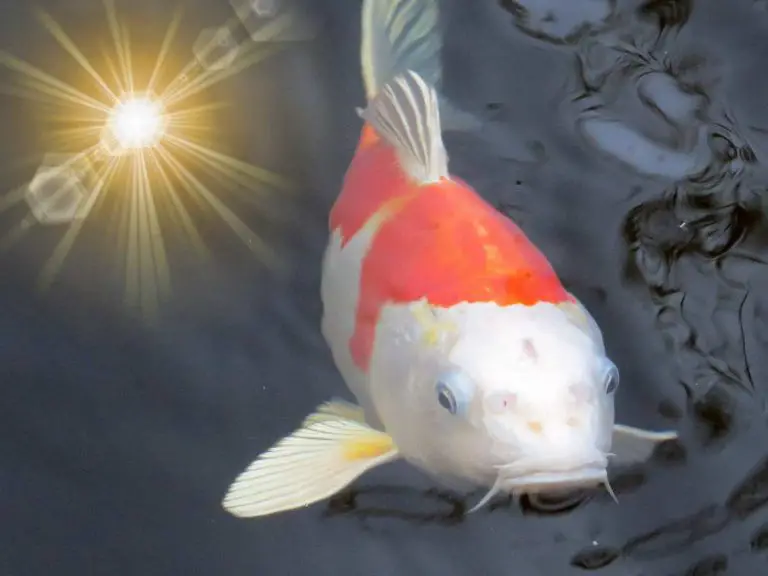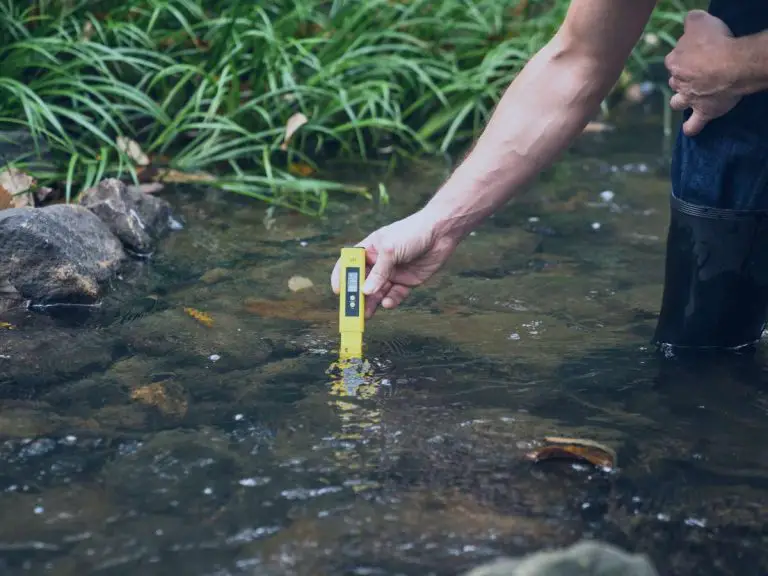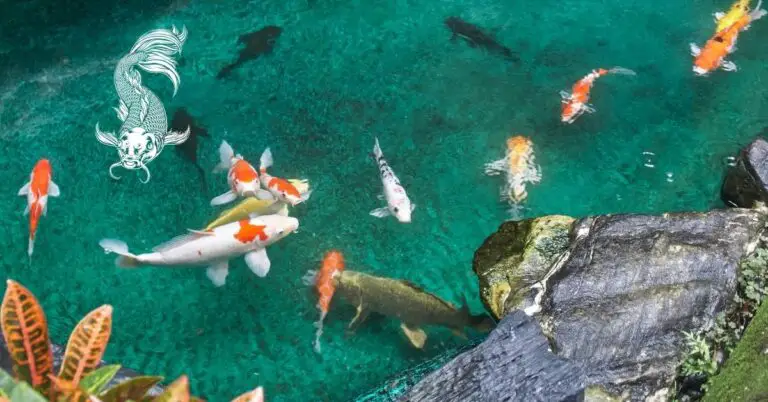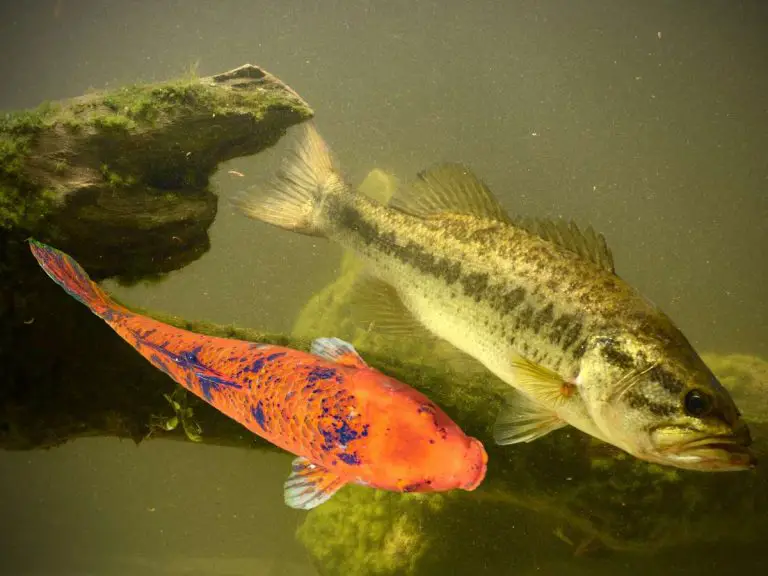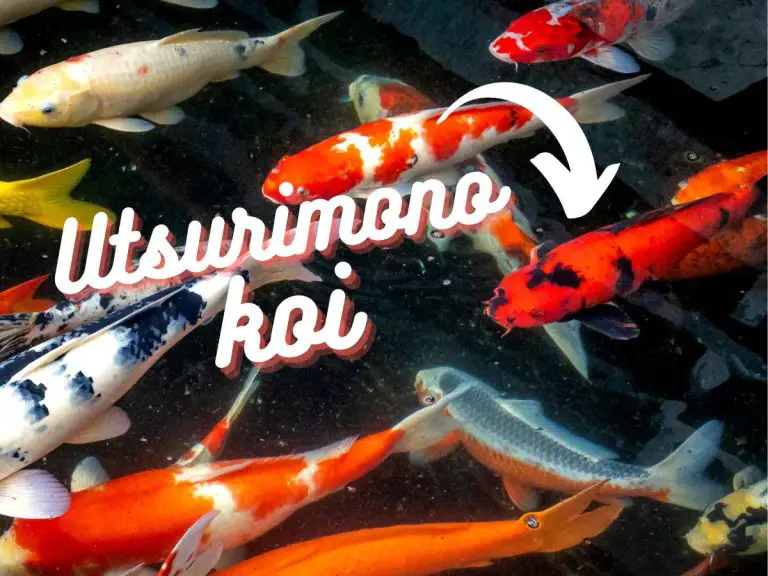Kohaku Koi Guide: Complete Resource for Beginners and Koi Enthusiasts
Perhaps you’ve heard of the kohaku koi, a renowned ornamental fish originating from Japan. With their distinct red and white patterns, kohaku koi have become a favorite among aquatic enthusiasts globally.
This article offers an in-depth look into the history of kohaku koi, including information on their diverse varieties. Whether you’re a beginner exploring the world of koi or an experienced hobbyist seeking advanced knowledge, keep reading for practical insights and essential care guidelines. From understanding their unique attributes to the nuances of breeding and more, this article will give you a thorough understanding of kohaku koi and their significance in aquatic care.
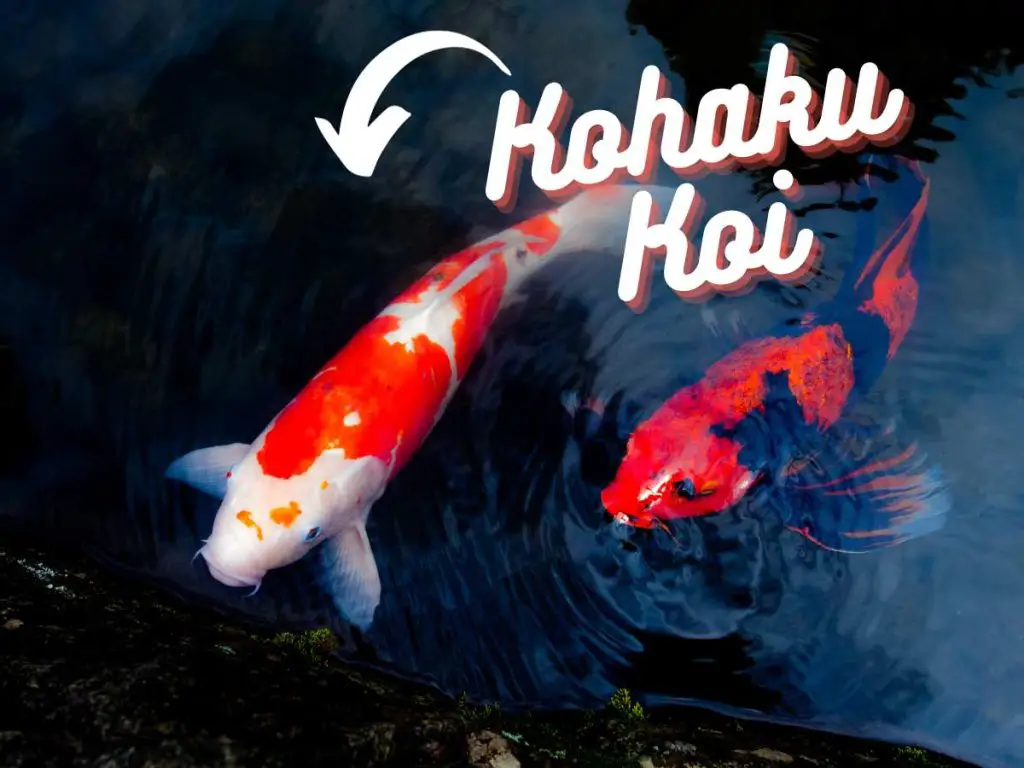
What is a Kohaku Koi?
A Kohaku Koi is a variety of ornamental carp characterized by its pristine white body and vibrant red markings.
Originating from Japan, the Kohaku Koi is a testament to the art of selective breeding, which began in the early 19th century. The name “Kohaku” translates to “red and white,” aptly describing the fish’s distinct coloration. This koi variety holds a special place in Japanese culture, often symbolizing positive attributes such as love, success, and perseverance.
Historically, the first Kohaku Koi were discovered in the Niigata Prefecture of Japan in the 1820s. Initially, these fish had pale red patterns, but with meticulous breeding, the intensity of the red coloration was enhanced over generations. By the late 19th century, the Kohaku had gained significant recognition and became a favorite among koi enthusiasts.
The evolution of the Kohaku Koi is a reflection of the dedication and passion of Japanese breeders. Over the years, they have refined breeding techniques to produce koi with brighter whites, deeper reds, and more defined patterns. Today, the Kohaku remains a cornerstone variety in the world of koi, admired for its beauty and the rich history it embodies.
A Wide Variety of Kohaku Koi
Kohaku koi can vary widely in pattern and color intensity. Some individuals may display bold and intense red markings, while others may have more subtle shades. The goal for breeders is to achieve a well-balanced and harmonious pattern that showcases both the red and white areas of the fish.
These distinctive patterns set kohaku koi apart from other varieties. Their striking beauty and elegant simplicity have made them a favorite choice for koi enthusiasts and hobbyists alike.
We’ll explore more of these varieties further below.
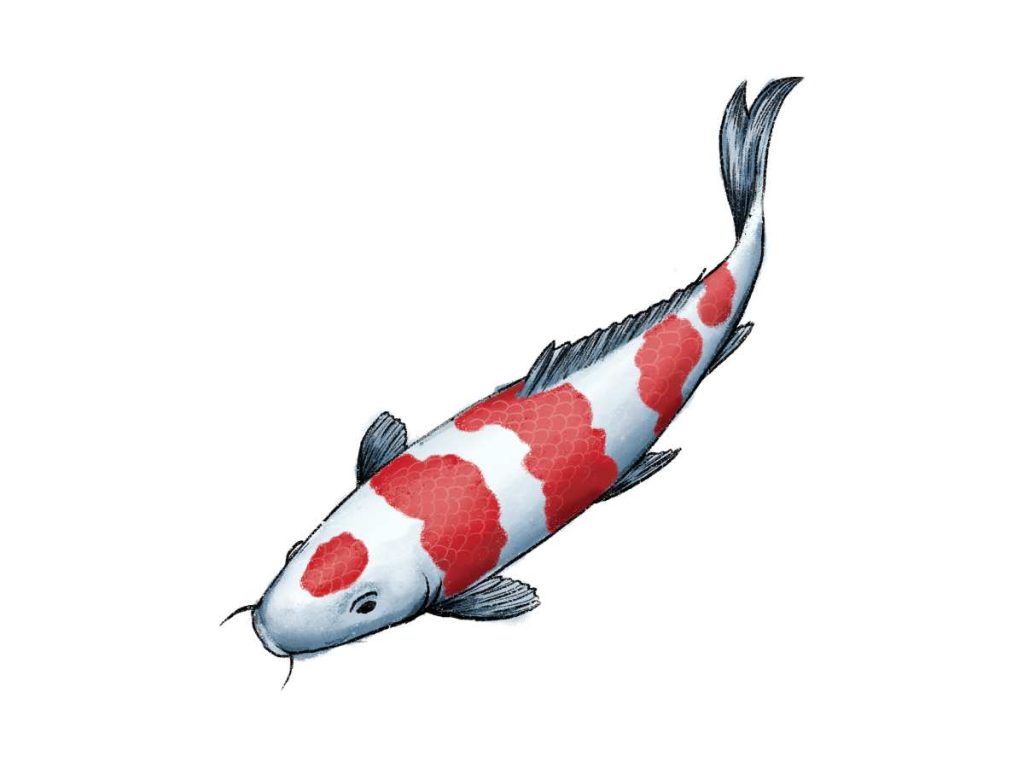
Kohaku Koi Care
Providing Kohaku koi (and all your pond fish) with optimal water conditions, temperature, and diet is of utmost importance. These factors play a crucial role in the overall health and well-being of your fish.
Namely, the water quality in your koi pond should be closely monitored and maintained. Koi fish thrive in clean and well-oxygenated water. Regularly testing the water parameters such as ammonia, nitrite, and pH levels is essential. Changes in these levels can indicate potential problems that need to be addressed.
Investing in a good filtration system is crucial to ensure proper water circulation and keep the pond free from debris and harmful substances. Additionally, regular water changes are necessary to prevent the buildup of toxins and maintain a healthy environment for your kohaku koi.
Meanwhile, Kohaku koi fish are most comfortable in water temperatures ranging from 62°F to 80°F (16°C to 27°C). Extreme temperature fluctuations can be stressful for them and compromise their immune systems.
To regulate the water temperature, you can use a pond heater or chiller depending on the climate in your area. It’s also important to keep an eye on any sudden changes in temperature and take appropriate measures to stabilize it.
Finally, a balanced and nutritious diet is crucial for the health and growth of your kohaku koi fish. A high-quality koi food that contains a mix of proteins, fats, carbohydrates, vitamins, and minerals should be the staple part of their diet.
Feeding your kohaku koi should be done in moderation to avoid overfeeding, as excess food can lead to water pollution and health issues. It’s recommended to feed them small portions multiple times a day, rather than one large feeding. This allows for better digestion and reduces the risk of digestion-related problems. It also means that there won’t be leftover food soaking in the pond that can lead to algae and other issues down the line.
Essential Equipment for Kohaku Koi Care
Here’s a list of must-have equipment to ensure proper care for your kohaku koi (as well as any other fish you might have, like showa and tancho koi).
- A reliable pond filter system
- Aeration devices like air pumps or waterfalls
- A water testing kit
- Pond heaters or chillers for temperature control
- Koi food pellets suitable for their dietary needs
- Pond netting to protect them from predators
By providing your kohaku koi with the right water conditions, maintaining an appropriate temperature, and feeding them a nutritious diet, you’ll be ensuring their overall health and happiness!
Breeding Tips for Kohaku Koi
If you’re ready to take your kohaku koi hobby to the next level, breeding your own kohaku koi can be an exciting and rewarding experience. By following a few essential tips, you can increase the chances of successful breeding and raise healthy offspring.
Selecting Breeding Pairs
When selecting breeding pairs, always (always, always) choose healthy and high-quality kohaku koi. Look for fish with vibrant colors, clean patterns, and excellent body conformation. These are indicators of good genetic qualities that will likely be passed on to their offspring.
Consider the age and size of the potential breeding pairs. Typically, it is best to select mature koi that are between two and five years old. This ensures that they have reached sexual maturity and are ready for breeding. Additionally, pairing koi of similar size and shape minimizes the risk of injury during the breeding process.
It’s essential to keep a close eye on the progress of the breeding pair once they are together. Observe their behavior closely and look out for signs of aggression or stress. If any issues arise, such as continuous chasing or torn fins, it may be necessary to separate the koi temporarily.
The Ideal Breeding Environment
A suitable environment plays a crucial role in successful kohaku koi breeding. The water temperature should be maintained between 68°F and 74°F (20°C to 23°C) to encourage breeding behavior. Monitor the water quality closely, ensuring it is pristine with proper filtration to provide optimal conditions for the mating process.
Creating appropriate spawning areas within the pond is essential. Installing spawning mops or brushes will simulate natural conditions and provide a surface for the female koi to release her eggs. These can be made using soft materials, such as nylon rope or floating plants.
During the breeding process, it is vital to keep an eye on the fertilized eggs. After spawning, the koi parents may eat the eggs, so it might be necessary to remove them to a separate tank or floating basket for protection. Ensure that the water parameters in these separate tanks closely match those in the main pond to minimize stress on the eggs.
How to Select High-Quality Kohaku Koi
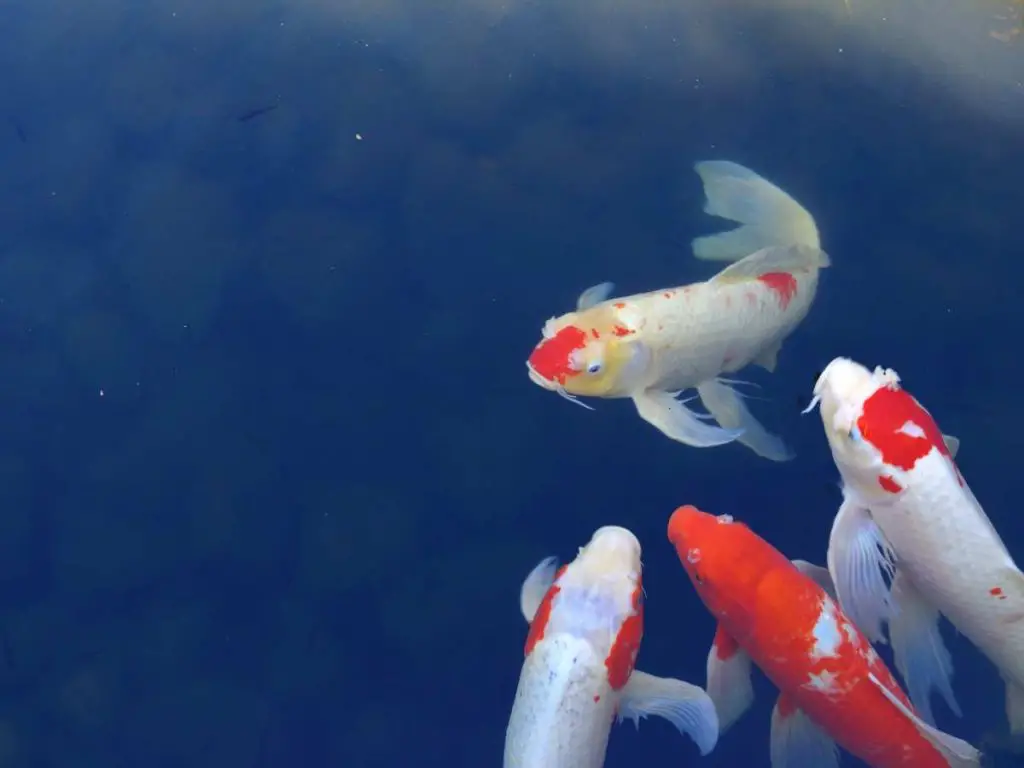
When it comes to selecting high-quality kohaku koi fish (whether to buy or to breed), there are several key factors to consider. These factors will help you choose the best kohaku koi that meets your expectations and enhances the beauty of your pond.
Color and Pattern
The color and pattern of a koi fish are essential when determining its quality. Look for kohaku koi with a vibrant, pure white base color that is free from blemishes or spots. The patterns should consist of deep, even, and well-defined red markings that stand out against the white background. Avoid kohaku koi with uneven patterns or those that have bleeding colors into the white base.
Skin Quality
A high-quality kohaku koi will have smooth, glossy skin. The skin should be thick and supple to protect the fish from harmful bacteria or parasites. Avoid kohaku koi with rough or discolored skin, as this may indicate poor health or insufficient care.
Body Shape
An ideal kohaku koi should have a well-proportioned body shape with a broad, rounded head and a muscular body. The body should be symmetrical from side to side and have a balanced appearance. Avoid kohaku koi with deformities, such as bent spines or uneven body growth.
Size
The size of a kohaku koi fish can also play a role in its quality. Keep in mind that larger koi often have more established patterns and colors compared to younger or smaller ones. However, size alone does not determine quality, so it’s important to consider other factors as well.
Health and Behavior
When selecting a kohaku koi, pay attention to its overall health and behavior. Look for fish that are active, alert, and responsive to their environment. Avoid kohaku koi that appear lethargic, have abnormal swimming patterns, or show signs of illness.
By considering these factors when choosing your kohaku koi, you can ensure that you bring home a high-quality fish that will thrive in your pond and bring you joy for years to come.
Five Kohaku Koi Varieties and Characteristics
Kohaku koi, with its striking red and white pattern, is one of the most popular varieties of koi fish. But remember how we discussed that there are plenty different sub-varieties of kohaku? Each has its own unique characteristics that make it a standout choice for koi enthusiasts. Here are the five most popular
1. Tancho Kohaku
Tancho kohaku is a standout among koi enthusiasts due to its iconic single red spot on its head. This spot is reminiscent of the Japanese flag, hence the name “tancho,” which means “red-crowned crane.” The purity and symmetry of this variety make it truly captivating and highly sought after by collectors.
2. Maruten Kohaku
Maruten kohaku is characterized by a unique red pattern on the head, which enhances its overall beauty. This pattern can vary from a simple dot to a more elaborate design, adding depth and interest to the fish. The contrasting white background further accentuates the red markings, making Maruten kohaku a visually striking variety.
3. Nidan Kohaku
The Nidan kohaku variety boasts not just one, but two red patterns on its white body. This makes it particularly eye-catching as the two red areas can be positioned differently, creating an intriguing visual effect. The symmetrical placement of these patterns adds a sense of balance and harmony to this variety.
4. Sandan Kohaku
Sandan kohaku features three distinct red patterns laid upon its white base. Like Nidan kohaku, Sandan also relies on symmetry to create aesthetic appeal. The layering of these patterns creates depth and complexity, making Sandan kohaku an alluring choice for koi enthusiasts looking for something truly unique.
5. Inazuma Kohaku
The Inazuma kohaku variety is known for its lightning-like red patterns that strike from head to tail. This distinct marking creates a sense of dynamic movement, giving the fish an electric appearance. Inazuma kohaku is often favored by those seeking a koi that makes a bold and captivating statement in their pond.
These are just a few examples of the mesmerizing kohaku koi sub-varieties available. Each variety offers its own distinct charm and allure, making kohaku koi a favorite among pond enthusiasts. Whether you prefer the simplicity of a single red spot or the complexity of layered red patterns, there’s sure to be a kohaku koi variety that captures your heart.
Beginner’s Guide to Kohaku Koi
OK, so you’re convinced, and ready to start your journey with kohaku koi. Here are some helpful tips and advice for beginners. And again, note that these tips will be broadly applicable to any variety of koi you have in your pond.
Set Up Your Pond Properly
Before bringing home your kohaku koi, make sure your pond is ready for their arrival. Ensure the water is clean, properly filtered, and well-aerated. The ideal water temperature for kohaku koi is between 68-77°F (20-25°C).
Start with Healthy Stock
When selecting your first kohaku koi, choose from a reputable dealer or breeder who offers healthy and well-cared-for fish. Look for koi with bright and vibrant colors, clear skin, and a healthy body shape. Avoid buying koi that show signs of illness or have any physical abnormalities.
Carefully Monitor Water Quality
Kohaku koi are highly sensitive to changes in water conditions, so it’s crucial to regularly test the water quality parameters such as pH, ammonia, nitrite, and nitrate levels. Consider using a water testing kit to ensure optimal conditions for your fish.
Provide Balanced Nutrition
Feed your kohaku koi a high-quality diet specifically formulated for koi fish. A balanced diet should consist of both protein-based foods like pellets or live food, as well as vegetation such as algae or lettuce. Avoid overfeeding your fish and remove any uneaten food to maintain good water quality.
Stay Consistent with Feeding Schedule
Establish a regular feeding schedule for your kohaku koi and stick to it. Over time, they will become accustomed to the routine and eagerly anticipate feeding times. Consistency is key to keeping your fish healthy and maintaining their vibrant colors.
Keep an Eye on Fish Behavior
Pay attention to your kohaku koi’s behavior and appearance. Watch for any changes in swimming patterns, eating habits, or signs of stress or illness. Early detection of any potential health issues allows for prompt action and can prevent further complications.
Educate Yourself Continuously
Kohaku koi care is a journey of continuous learning. Stay informed about the latest advancements in koi health, nutrition, and pond maintenance. Join online forums or local koi clubs to connect with experienced enthusiasts who can share their knowledge and provide valuable advice.
Enjoy Their Beauty and Tranquility
Above all, take the time to appreciate the beauty and tranquility that kohaku koi bring to your pond. These magnificent creatures have a calming effect and watching them gracefully swim can be a source of relaxation and joy.
Final Thoughts
We’ve covered a lot of ground in this kohaku koi guide, and I hope you’ve found it useful and informative. Let’s quickly recap the key points we’ve discussed:
- Kohaku koi are a beautiful variety of fish known for their vibrant red and white patterns.
- Proper care is crucial for the health and well-being of your kohaku koi, including maintaining optimal water conditions and providing a balanced diet.
- If you’re interested in breeding kohaku koi, be sure to create the right environment and carefully select the breeding pairs.
- When selecting high-quality kohaku koi, pay attention to factors such as pattern symmetry, color intensity, and overall body shape.
- Kohaku koi come in various sub-varieties, each with its own unique characteristics and traits.
- If you’re new to keeping kohaku koi, don’t worry! We’ve provided some beginner-friendly tips to help you get started on the right foot.
Now that you know all about these fascinating fish, it’s time to put your newfound knowledge into action. Use this guide as a reference as you care for your kohaku koi or embark on breeding endeavors. Remember, taking care of these majestic creatures requires dedication and attention to detail, but the rewards are well worth it. The more you learn and apply, the closer you’ll get to creating a thriving and visually stunning pond filled with healthy kohaku koi. Happy pond-keeping!
Related Questions
Can kohaku koi be kept with other fish in the same pond?
Kohaku koi can generally be kept with other fish in the same pond as long as certain precautions are taken. It is important to choose compatible species that have similar water requirements and temperaments. Additionally, providing enough space and hiding spots for each fish can help minimize potential conflicts. Monitoring water quality regularly and maintaining good filtration is crucial to ensure the health of all pond inhabitants.
How long do kohaku koi live?
On average, healthy kohaku koi can live for 20 to 30 years or even longer with proper care. The lifespan of kohaku koi can be influenced by various factors such as genetics, diet, water conditions, and overall health. Providing a balanced and nutritious diet, maintaining optimal water parameters, and regular health check-ups can help extend the lifespan of these beautiful fish.

